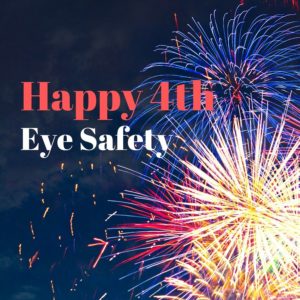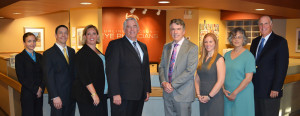Fireworks Eye Safety


This is the time of year when people attend fireworks shows or buy their own fireworks and set them off in their backyards. Fireworks are dangerous explosives, so you need to be careful and take precautions.
Fireworks can malfunction. At a California fireworks show in 2013 a defective shell exploded early and sent shrapnel into the crowd injuring 39 people. In 2015 a firework shot into a crowd near Vail, Colorado and injured nine people. However, injuries at professional fireworks shows are uncommon. Most injuries caused by fireworks are the result of misuse by consumers.
Common mistakes people make when using fireworks are improperly lighting the fireworks, lighting fireworks while holding them, or holding them too close to other people.
The U.S. Consumer Product Safety Commission (CPSC) reported that fireworks were involved in an estimated 9,100 injuries in U.S. hospital emergency departments during 2018 and 62% of those injuries happened between mid-June and mid-July.
The U.S. CPSC found that 19% of the injuries were eye injuries.
Even sparklers can be dangerous because they burn at more than 2,000 degrees Fahrenheit. Sparklers can catch clothing on fire and cause severe burns. Sparklers caused 1,200 injuries in 2017 and one death. Bottle rockets are the type of fireworks that cause most eye injuries.
WHAT TO DO IN CASE OF FIREWORKS EYE INJURY
An eye injury from fireworks combines blunt force trauma, heat burns, and chemical exposure and is a medical emergency.
- Seek medical attention immediately.
- Do not rub your eyes.
- Do not rinse your eyes.
- Do not apply pressure to your eyes.
- Do not remove any objects that are stuck in your eye. You could further injure your eye.
- Do not apply any ointments or take any blood-thinning pain medications such as aspirin or ibuprofen.
FIREWORKS SAFETY TIPS
- Attend only public fireworks displays put on by trained professionals and stay back at least 500 feet from the display.
- Do not pick up fireworks that may be left over after the display. Fireworks that may have been ignited but failed to explode can still be active.
IF YOU USE FIREWORKS FOLLOW THESE SAFETY RULES
The following safety tips are from the U.S. Consumer Product Safety Commission:
- Never allow young children to play with or ignite fireworks.
- Avoid buying fireworks that are packaged in brown paper because this is often a sign that the fireworks were made for professional displays and that they could pose a danger to consumers.
- Always have an adult supervise fireworks activities. Parents don't realize that young children suffer injuries from sparklers. Sparklers burn at temperatures of about 2,000 degrees - hot enough to melt some metals.
- Never place any part of your body directly over a fireworks device when lighting the fuse.
- Back up to a safe distance immediately after lighting fireworks.
- Never try to re-light or pick up fireworks that have not ignited fully.
- Never point or throw fireworks at another person.
- Keep a bucket of water or a garden hose handy in case of fire or other mishap.
- Light fireworks one at a time, then move back quickly.
- Never carry fireworks in a pocket or shoot them off in metal or glass containers.
- After fireworks complete their burning, douse the spent device with plenty of water from a bucket or hose before discarding it to prevent a trash fire.
- Make sure fireworks are legal in your area before buying or using them.


